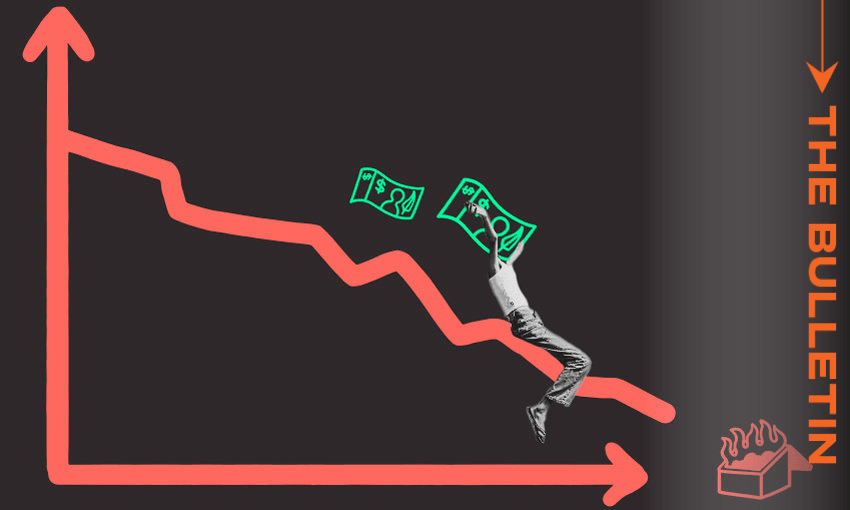Inflation is dropping, but will it be enough to drag the OCR down with it, asks Catherine McGregor in this excerpt from The Bulletin, The Spinoff’s morning news round-up. To receive The Bulletin in full each weekday, sign up here.
Inflation slows to its lowest rate in more than two years
Good, but perhaps not good enough. That’s the consensus response to the latest inflation figures from Stats NZ. Inflation rose by 0.5% in the final quarter of 2023, exactly in line with economists’ expectations but lower (ie better) than the Reserve Bank’s (RBNZ) forecast of 0.8%. The annual inflation rate dropped to 4.7% (from 5.6%), the lowest it’s been since June 2021. “Prices for about one-third of all items in the CPI [consumer price index] basket decreased in the December 2023 quarter, the most in over three years,” said a Stats NZ spokesperson. While tradeable inflation – that related to goods and services that are imported or in competition with foreign goods – is dropping swiftly, domestic factors aka non-tradeables are now the dominant drivers of inflation, rising 1.1% for the quarter and 5.9% for the year.
‘The worm has most definitely turned’
To bank commentators, the numbers are a sign the economy is heading in the right direction. “A year earlier, annual inflation was 7.2% which it had averaged across calendar 2022. The worm has most definitely turned, and we think inflation will keep falling relatively quickly for the next few quarters,” said Stephen Toplis, head of research at BNZ. The self-reinforcing nature of inflation expectations should drive further falls, said Kiwibank economist Jarrod Kerr: “We are winning the (psychological) war on inflation.” Kerr expects to see inflation back within the RBNZ’s target range of 1% to 3% by the second half of the year. ANZ’s Henry Russell was a little less bullish. The RBNZ, he said, “is winning the war, just not quite as fast as they’d hoped”.
What the numbers mean for interest rates
Whether yesterday’s announcement heralds the start of the Reserve Bank’s rate-cut season depends on who you ask. For Westpac’s Satish Ranchhod, the stubbornly high non-tradeable numbers will give RBNZ governor Adrian Orr pause. The current picture is of “‘lower’ inflation; not low inflation,” he said. “Rate cuts won’t be on the table in the near term.” Kerr disagrees. With annual inflation heading towards 3%, “rate cuts are not too far away,” he thinks. Council of Trade Unions economist Craig Renney has a different take, noting that the fall in inflation “doesn’t appear to have been driven by government spending [cuts] in any significant way”. His takeaway: planned public spending cuts “will simply hurt those who use those services, with little or negative economic benefit overall”.
The muted impact of debt to income ratios
For first home buyers, now responsible for a record-high share of the property market, the other big news of the week is the imminent introduction of debt to income (DTI) ratios. As covered in yesterday’s Bulletin, the RBNZ plans to limit most borrowing to six times income for owner-occupiers, and seven times income for investors – though these “guardrails” won’t be activated anytime soon. Writing on Interest, David Hargreaves says once the measure is in the RBNZ’s arsenal, it can be implemented without government approval. “And of course it can be changed – to be more strict or more loose as needs determine. Which is the important bit.” Still, with interest rates unlikely ever to be as low as they were in the last housing boom, DTIs may not matter as much as they might have. “Well done to the RBNZ for sheer dogged perseverance,” says Hargreaves, “but I do wonder if DTIs can ever be quite as effective again as they might have been some years ago.”
